The Casamance is the region of Senegal separated from the main part of the country by The Gambia. It has a long history of rebels and the French government advises to avoid it, except if flying directly to the Club Med in Cap Skirring. On the other hand, many people who have lived or traveled there told me that it is fine as long as I observe the basic precautions.
I plan to cross it to Guinea-Bissau, but cycling always on the main axis to Ziguinchor. The basic precautions are not to cycle at night (the roads are closed and controlled by the military anyway) and not to camp in the wild.
I find javel (bleach) in Kartong to clean my water bottles. One of my container has developed green mold at the bottom. By the way, I still didn’t get sick from drinking tap water, and can award medals for the worst water to Foundiougne, Touba, and Ziguinchor, in order of disgustingability. On the other hand, the strong plastic of the Hépar water bottle has survived until now mold-free. The quality of plastic bags is also significantly higher if they come from Europe.
Another thing coming from Europe are the newspapers used to wrap bread or sandwiches. The shopkeepers here buy it in bulk. I got Italian and Chinese news in my sandwiches.
My entrance back to Senegal is very special. The Kartong border is a half border: there is a bureau on the Gambian side, but nothing on the Senegalese side. I must take a pirogue to take me to the other side.
The exit formalities are done quickly in this very quiet border. Both the military and the immigration officer ask for “something for me?” in front of their bosses, but without insisting. Having already changed all my dalasis back to CFA, I pay 1000 CFA for the pirogue to take me to the other side in 5 minutes.

I am dropped on a beach where young men with motorcycles wait for potential customers. As I have my bicycle, I venture on the piste in the terrible heat, and have to push in the sand from times to times. The piste is not following the road I have on my GPS, but I just need to go south until finding a proper road.

I am welcome by the kids of the first village with the usual Senegalese “give me your bike” greeting. I see signs for a petition against mining, as similarly to the coast between Lompoul and M’boro, the government is giving the whole land strip to a mining company, with a big potential for destroying the local agriculture. As I don’t enjoy the sand piste at all, the shopkeeper tells me a trick: if I pass over the dune and get to the beach by a bridge, at low tide, the sand is hard and I can cycle properly there until Abene.
I had already seen in Lompoul that it really depends on the tide and the sand, but I am ready to give it another try. I push the bike until finding the bridge. And for a bridge, it’s quite an adventurous bridge.

The wooden boards bend heavily under the combined weight of the loaded bike and myself. They move as they are not really tied together. It’s tricky and I’m not looking forward to falling into the mangrove mud. But I finally arrive to the other end, where the guard of a mysterious empty campment shows me the way to the hard sand.
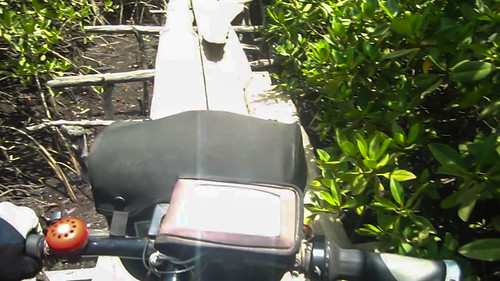
And then, it’s a very good surprise: the sand is as hard as a good piste and I can fly along the waves with the same gear that I would use on good paved roads.
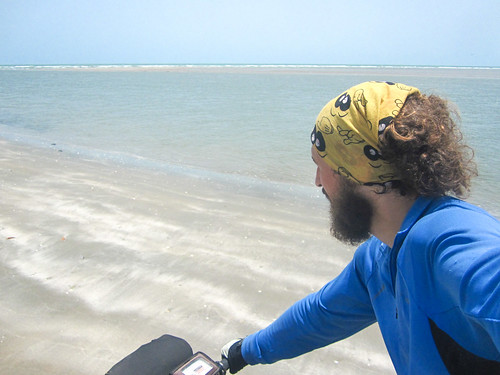

The shells crack under the tires and the light wind pushes me forward as the birds fly around. It makes 5 very pleasant kilometers worth the efforts and the uncertainty that preceded. My GPS trace shows me riding in the waves of Google Maps.

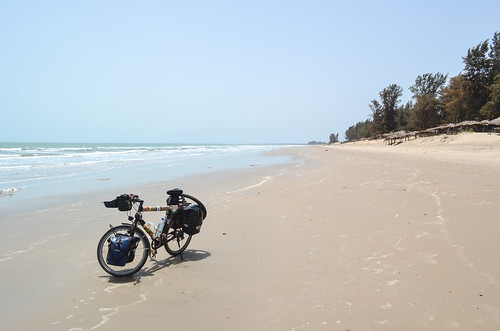

I reach the paved road again until Diouloulou, a town on the “normal” road from Banjul to Ziguinchor. My current problem is that I entered Senegal without a stamp, hence my presence is not yet legal in the country. I just need a stamp and no visa, but French nationals will need one from July 1st, as a revenge from the government against the tight and costly visa procedure that France imposes to Senegalese citizens. After this, there won’t be any visa-free country for French nationals between Morocco and Namibia, while it was almost the opposite 10 or 20 years ago.
When I visit the police station in Diouloulou, to ask what to do for that stamp issue, the officer tells me “No problem, you’ll exit to Bissau tomorrow so you can just go free like this“. That’s a strange answer but a happy news. The official border post is in Séléty, 12 km backwards toward the Gambian border. I’m happy to save 24 km and get a Sprite to celebrate.
In the meantime, I’m dubious about the road: what if I get stopped at a checkpoint and get into problems without a stamp? After seeking advice, I return to the police station to ask for a paper or some proof I can carry with me. This time, the big boss is here and categorical: I need to return to Séléty to get the stamp. So things are normal in the end. I was tricked into the easy way of believing the second officer. It’s almost like I would get as many answers as people I ask my question to. It’s logical in the end, since many people, especially in the administration, have no clue what their job is. Avoiding yes/no questions can diminish the risk of being misled, but it is not foolproof.
The return trip to Séléty takes most of my remaining daylight time and I decide to stay in Diouloulou for the night instead of wandering further. I play it safe for Casamance. The towns are protected by the military with heavy weapons, and they block the roads from 7pm.
After checking in an auberge, I am invited by Katarina and Lammert to spend the night at their house with wine. This sounds much better than sleeping next to the bar where the military are already starting to get drunk. We put the bike in their 4×4 and drive 5 km out of Diouloulou.
They live on a huge piece of land right by the river. It is very quiet, as the locals believe the place is home to a dragon spirit. The wind outside makes the heat supportable and the fire keeps the mosquitoes away.
I walk in the morning around the waters of the Casamance river delta. It is similar to the Saloum delta, with mangrove and fishermen pirogues.
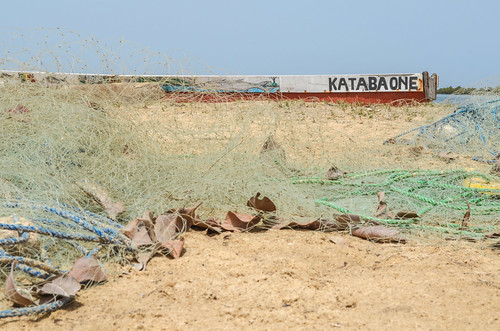
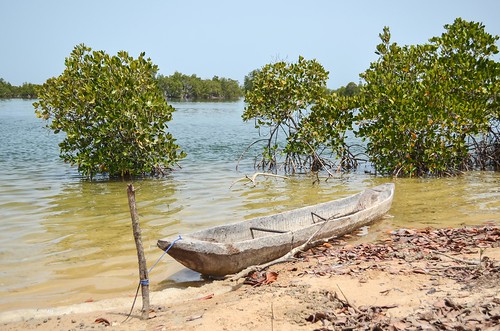

I can eat my breakfast directly off the trees: Casamance is mango-land and there’s no need to buy them, but to find the right ones instead around the roads.
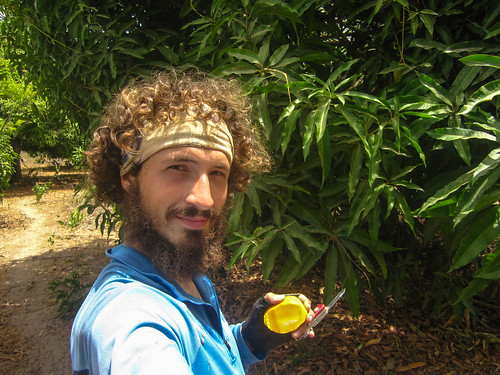
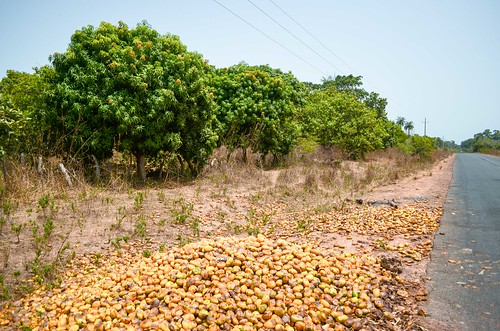
One of the pastimes is to sit under a tree and chat with friends, eating mangoes as they fall off the tree. That is what was doing the police officer in Séléty. The travelers were stopping their cars on the road, walk until the tree and show their ID to the police officer.
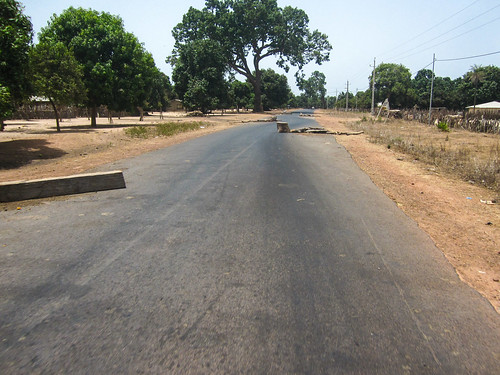
I stop another time in a mango field for lunch. No need to buy food.
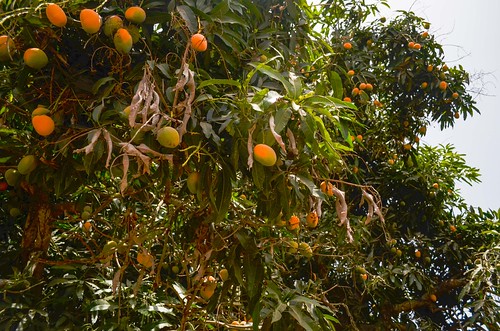
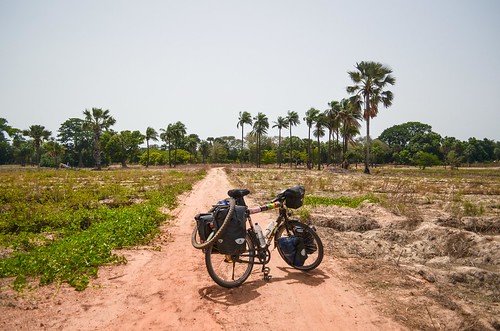
Now that I know how to say “give me money” in Wolof, I hear it everywhere. I’d say most of the Senegalese I met are incredibly kind, but also compulsively begging. Almost all the good roads, schools and water towers are introduced by a sign showing the funding by this or that Western country, so maybe it contributes to the image that the white man is here to give something. By the way, I am not always called Toubab in Casamance, but something like “doulou”. The kids in the different villages start singing the same song when they see me. I hear sometimes “Hé le Blanc“, which can be disturbing when was accustomed to being a Toubab, even if it is the same thing.
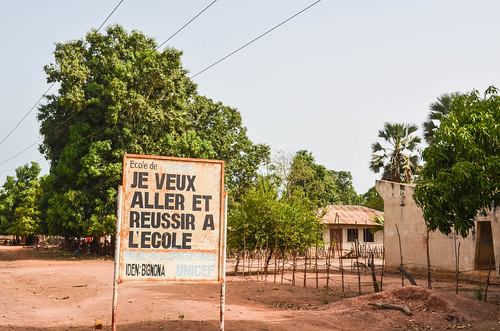
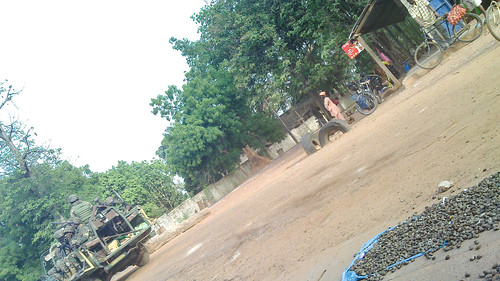
For a major axis of Casamance, the road is rather quiet. There is not much traffic even between Bignona and Ziguinchor. I bite in the cashew fruits when the mangoes disappear, it provides a bit of freshness in the strong heat. If I am not cycling with the little breeze, standing still makes me sweat a lot.
The last stretch to Ziguinchor is through the mangrove of Tobor. The road is made of cobblestone for 10 km. There were several checkpoints on the road, but I was stopped only once, by a young officer who wanted to practice his English. I find that in general, the Casamance region is more English speaking than the rest of Senegal.
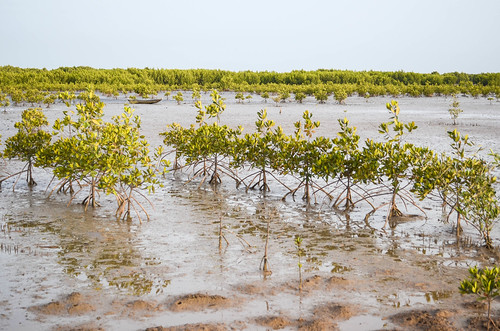

Orange is the brand with the most ads by the roads. They have posters everywhere, and as a cellphone operator, many shops are painted in black and orange. Canal+, BICIS (BNP Paribas group) and SGBS (Société Générale group) follow it in the ranking of the branding presence.
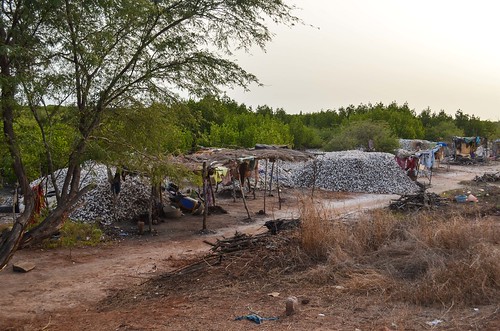
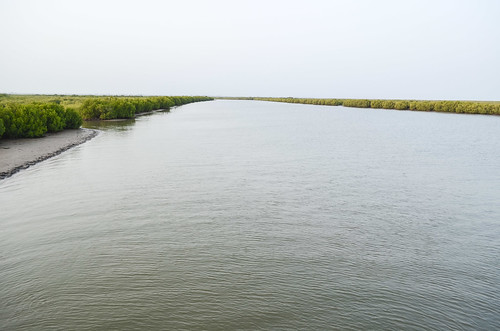
I take advantage of the wifi in my guesthouse to push and schedule everything online, as I am soon in Guinea-Bissau (described by the Senegalese as people without muscles who drink too much) and Guinea (described by the Senegalese as people without much civilization). I will certainly find much less electricity over there.
While working on the table outside, a big mango crashed 5 cm from my laptop. This dangerous warning pushed me into the kitchen, where I have been sweating for the whole evening. The heat and humidity just before the rainy season is peaking and the best is to stay outside where there is wind. I stop and go to bed when an electric pole collapsing withdrew the electricity of the whole neighborhood …
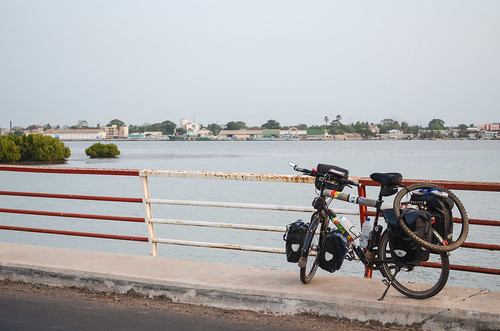







Good information, I am coming from north as well, in Dakar now. I stumble on your site serching fot info regarding the safety between Diouloulou and Bignona.Did you actual cycle this streatch?
Cheers,
Lelo
Yep, as you can see the road is pleasant (though you probably won’t have all those mangoes in December), no particular safety concern. I saw some armed patrols and the roads of this region are closed to traffic from sunset.
Ca y est ,j’ai fini de traduire. Du coup le big mango s’est transformé en grosse mangue 🙂
hello Jean Baptiste.
un big mango, c’est quel genre de bestiole .l’aventure continue , sauna gratuit !